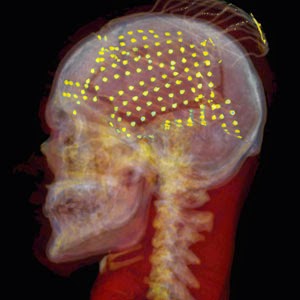A new logic-defying mathematical model could lead to
materials for better skin grafts and new smart materials
(Feb.26, 2015) Wake
up in the morning and stretch; your midsection narrows. Pull on a piece of
plastic at separate ends; it becomes thinner. So does a rubber band. One might
assume that when a force is applied along an axis, materials will always
stretch and become thinner. Wrong. Thanks to their peculiar internal geometry,
auxetic materials grow wider when stretched. After confounding scientists for
decades, University of Malta researchers are now developing mathematical models
to explain the unusual behaviour of these logic-defying materials, unlocking a
plethora of applications that could change the way we envision the future
forever.


















































